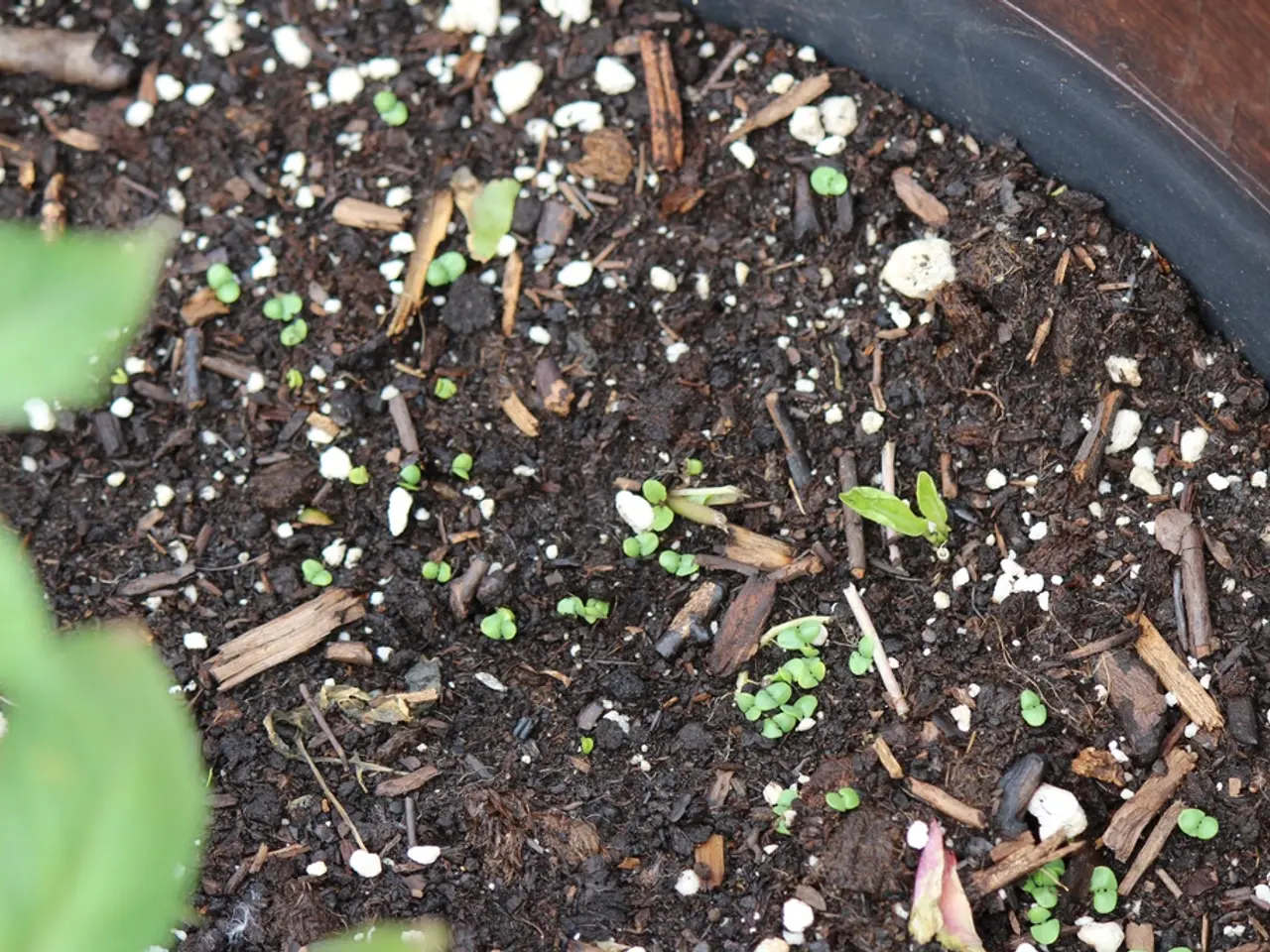Soil moisture enhancer: Zinc's potential role in plant growth.
In the world of agriculture, zinc plays a crucial role as an essential trace element for plant life. This versatile micronutrient is involved in key cellular functions such as chlorophyll production, enzyme activation, hormone regulation, and signal transduction.
When zinc is lacking in plants, a variety of issues can arise. Zinc deficiency in plants can cause growth retardation, interveinal chlorosis, leaf deformation, delayed flowering, reduced root development, and yield losses. The quality of the plant can be affected, with potential issues including leaf tip discolouration, halted vertical growth, bunched leaves, and flowers unable to grow or dying.
Symptoms of zinc deficiency in edible plant parts are not hard to spot. They include interveinal chlorosis, stunted growth, leaf deformation, delayed fruit development, and reduced crop yield. This deficiency can lead to lower-quality produce, increased susceptibility to disease, long-term soil degradation, and micronutrient malnutrition in humans.
Zinc is taken up by plant roots as the divalent cation (Zn2+), and is transported by various transporter proteins. Zinc transporters, such as the zinc-regulated transporter/iron-regulated transporter (ZRT/IRT) and the heavy metal ATPase family protein (HMA), play a crucial role in zinc uptake, transport, and translocation in plants.
Fortunately, strategies to enhance zinc uptake in plants are available. These include the application of organic ligands, modifications in root traits, the use of plant biostimulators, nanoparticles, and plant growth-promoting bacteria. The application of zinc fertilizers or biofortification techniques can help overcome zinc deficiency and enhance zinc uptake and efficiency in plants.
It's important to note that zinc toxicity can also pose a threat. Excessive levels of zinc can interfere with the absorption of other vital nutrients, disrupt photosynthetic activity, cause chlorosis of leaves, and lead to oxidative damage and plant death in severe cases.
Zinc deficiency is often observed in calcareous, high pH, eroded, and land-levelled soils. In flooded rice soils, high phosphorus and bicarbonate concentrations reduce zinc availability to the crop.
Zinc oxide nanoparticles have been shown to provide zinc as a necessary nutrient for regulating fundamental plant processes, including germination, photosynthesis, gene expression, and cellular metabolism. Precision agriculture tools and monitoring can optimize zinc application efficiency, while possible products to improve zinc uptake and use in plants include zinc-containing fertilizers such as zinc sulfate and zinc chelates, as well as soil amendments that enhance zinc availability.
In conclusion, zinc is not just an essential nutrient for human health, but also for plant life. Ensuring adequate zinc levels in crops is crucial for maintaining crop quality, reducing yield losses, and improving overall plant health. By understanding the role of zinc and implementing appropriate strategies, we can help ensure a sustainable and productive future for agriculture.








